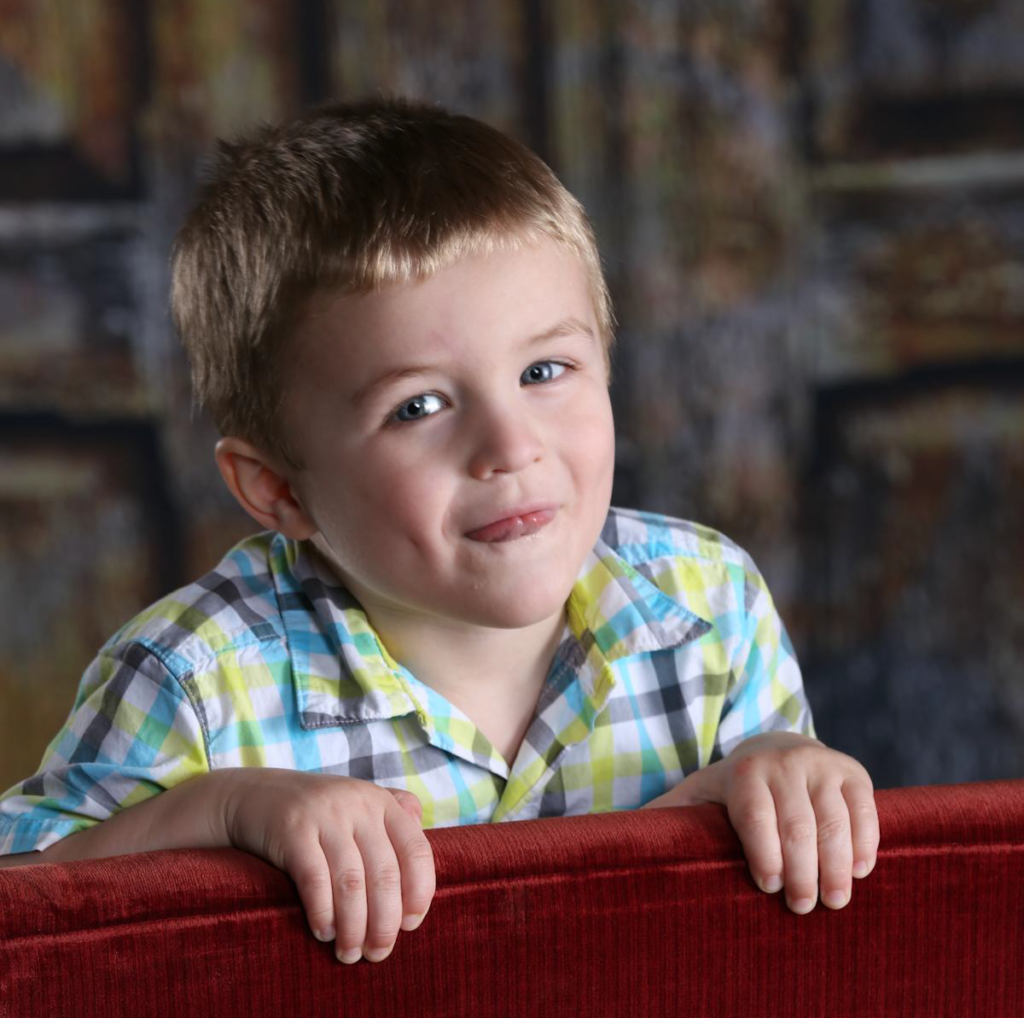
It was an otherwise normal workday in mid-October of 2012 when my cell phone vibrated on the desk. I had a text message from my wife, Jenn, which read as follows, “I received a call from the nurse and the doctor would like to see us this afternoon.” Immediately, I sensed the worst. Why else would a doctor with a several month wait list want to see us in person that afternoon? I called Jenn and we discussed that we were likely in for some troubling news later that day. I hung up the phone and glanced over at Landon’s 9-month old picture in a frame just to the left of my computer monitor. In that picture, he stood (well, he was actually propped up against an apple crate) smiling back at the camera. Since those early days in his development, when we found ourselves stressing over what clothes to bring for his picture day at JC Penney, much had changed. Landon had always been near the 90th percentile for height and weight and hit his major physical developmental milestones with ease. During the frst year, we found ourselves sailing through the questionnaires sent by the pediatrician in advance of his routine check-ups. Jenn and I would high fve one another when we made it to the back page of the questionnaire before answering “no” to three total questions regarding which milestones he had accomplished. However, we weren’t celebrating as much when the social and cognitive questions began to show up on the developmental questionnaires. Landon never pointed, never clapped, never stacked blocks, didn’t have a favorite toy…From 12 to 18 months of age, we noticed that Landon became more distant. He would often sit in the front room by himself and stare at the lights, sometimes for hours. His unusual social behaviors became very apparent during our frst Christmas back home in Washington State when he was 15 months old. Jenn and I took Landon to lunch with several friends who had children in the same age range as Landon. As the other children were interacting with their parents, Landon was truly in his own world and stared at a book the entire time. His social behavior was confounded by consistent ear infections, which we thought might have contributed to his speech delay. After several months of speech therapy, surgery for ear tubes, and further testing of hearing function, we had no answer as to why he wasn’t speaking. Moreover, he continued to become more distant. It was heartbreaking to see Landon interact with his grandparents as if they were complete strangers.
Flash forward to our meeting in mid-October of 2012 with a developmental pediatrician. The doctor had met with us a few weeks prior and observed Landon. She confrmed that his behaviors were consistent with autism spectrum disorder, and she wanted to run some further tests to identify whether there was a root cause for his delays. She ordered blood work (complete metabolic profle and genetic testing) and a brain MRI. The metabolic blood work came back normal; however, the genetic test results were the reason why she wanted to meet with us in person.
That afternoon, on an otherwise normal day in mid-October of 2012, we received the news that Landon has Phelan- McDermid Syndrome. As the doctor began to describe what this condition may or may not mean to our family, Jenn broke down in tears. I looked over as Landon danced in the corner of the examination room; it all seemed like a dream. We had thought something may be causing his delay, but had never heard of this condition. I asked the doctor how many kids with this condition she has worked with and she held up one fnger. “He will be my frst”, she said. She handed me a publication, still warm from the printer, which described what was known about a rare condition with a reported number of less than 1,000 cases globally. Later that evening, I sat in a quiet dark room at home and thought about how many doors had likely just closed for my 25-month old son. Based on the manuscript the doctor had given me, Landon would likely never go to a normal school, never attend college, likely never live alone, never get married, and never have children. Boom, doors closing one after another. All of the wonderful memories that each of those opportunities had provided Jenn and me would not be available for Landon. Worst of all, with only 1,000 cases globally, what chances were there for a treatment or cure for this condition?
Since that day in mid-October of 2012, we have moved forward. We know that we are not moving forward to where we thought we’d be going when Landon was born. However, we are moving ahead as a family and as a member of the Phelan-McDermid community. Landon just turned 4 years old in September of 2014. He attends full-time school in the early childhood development program at the local public school and receives 16 hours per week of applied behavior analysis therapy. In total, he puts in about a 45-hour week between school and therapy.
Working in the pharmaceutical industry, I have witnessed remarkable achievements in the felds of oncology, anti-virals, and immunology. I have seen the breakthrough potential when researchers align efforts to understand the biology of a disease. With increased awareness and support, the potential for a breakthrough in SHANK3 research grows, and in turn, so do the hopes of families like ours all around the world.
